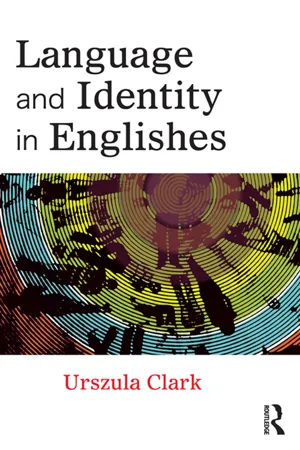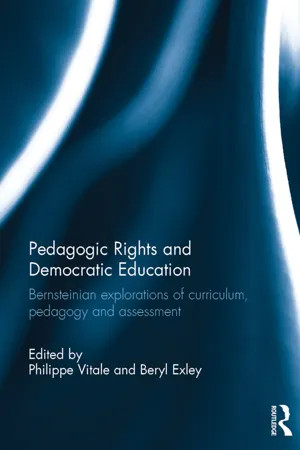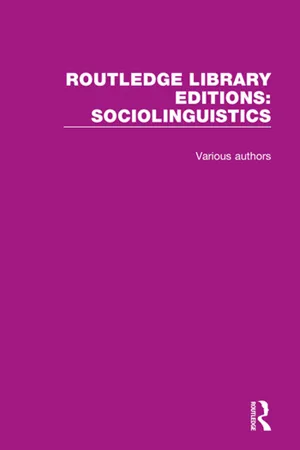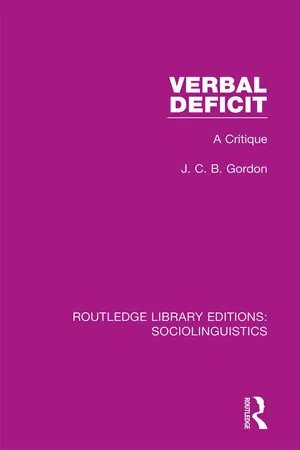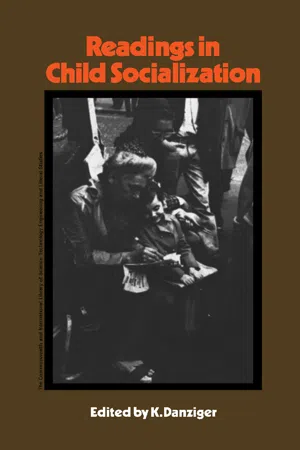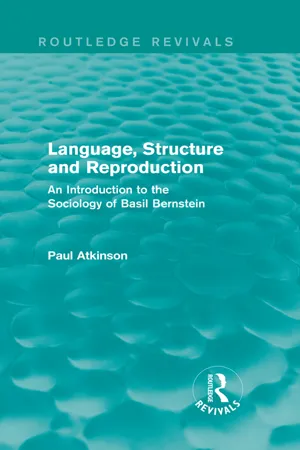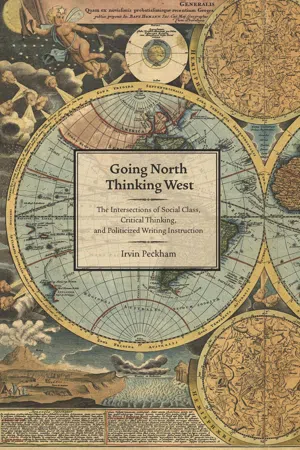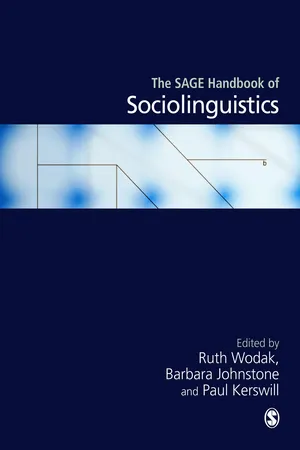Languages & Linguistics
Bernstein Elaborated and Restricted Code
Bernstein's elaborated and restricted code refer to two different styles of language use. Elaborated code is characterized by a wider vocabulary and more complex sentence structures, often used in formal or academic settings. In contrast, restricted code involves simpler language and is typically used in informal or familiar contexts. These concepts are important in sociolinguistics for understanding language variation and its social implications.
Written by Perlego with AI-assistance
Related key terms
1 of 5
9 Key excerpts on "Bernstein Elaborated and Restricted Code"
- eBook - ePub
- Urszula Clark(Author)
- 2013(Publication Date)
- Routledge(Publisher)
Briefly, Bernstein argued that education employed predominantly middle-class language structures to the disadvantage of pupils from lower-class backgrounds. He formulated a theory of language as codes, Elaborate and Restricted. Elaborate Code characterised linguistic use in formal contexts such as education, whereas Restricted Code typified linguistic use characteristic of informal, immediate contexts. Consequently, existing educational practice, Bernstein contended, privileged children familiar with the Elaborate Code, which characterised formal linguistic use to the detriment of those who were not. This is particularly so for children whose code was more restricted. In a later publication (1990: 20), Bernstein argued that such differences in linguistic use could be attributed to the complexities of modern-day distributions of labour. He says that:The simpler the social division of labour, and the more specific and local the relation between an agent and its material base, the more direct the relation between meaning and a specific material base, and the greater the probability of a restricted code orientation. The more complex the social division of labour, the less specific and local the relation between an agent and its material base, the more indirect the relation between meanings and a specific material base, and the greater the probability of an elaborated coding orientation.Bernstein argues that different spatial and temporal locations generate different interactional practices and different coding relations, in relation to their material base. That is, put simply, the economic and political rules that govern the exchange of labour also affect linguistic behaviour. The example he gives (1990: 20), is of a peasant working on a sugar cane plantation, who would see himself or herself as part of a simple division of labour. The peasant’s interactional practices, or core of gravity, would thus be very localised and more than likely encompassed by his or her immediate spatial location with people who lived and worked together. In the case of the plantation’s owner, he – as Bernstein points out, historically not she – would see himself as part of a complex division of labour in relation to the plantation itself, the local market and the circulation of goods as capital, which would include both national and international markets. The owner’s interactional practices and his centre of gravity lie both within and beyond the immediate plantation, and also within a complex division of labour that regulates a more generalised market base. - eBook - ePub
Pedagogic Rights and Democratic Education
Bernsteinian explorations of curriculum, pedagogy and assessment
- Philippe Vitale, Beryl Exley(Authors)
- 2015(Publication Date)
- Routledge(Publisher)
176). The basic principle is that restricted codes are to do with ‘condensed’ or circumscribed symbols and elaborated codes with ‘articulated’ or expanded ones. This is important for three reasons. First, it demonstrates that the distinction between restricted and elaborated codes is that they are radically different in kind; the former is not simply an inferior or ‘deficit’ version of the latter. They can be contrasted but not compared – the mistake of the likes of Rosen (1973) and Labov (1972). Second, when ‘elaborated’ is understood in its verb form it is clearly a process, not a thing. Third, the process of ‘articulating’ or ‘elaborating’ a symbol or meaning entails a practice extended over time: it is to explain what something means and, to put it at its most basic, it is to teach. At the end of the day, it might simply be the case that Bernstein miscalculated in favouring terms with such ambiguous connotations. He sometimes used instead ‘condensed’ and ‘expanded’; they may have ultimately served him better than ‘restricted’ and ‘elaborated‘. Importantly, Bernstein believed schooling and school success to be ‘predicated upon elaborated code and its system of social relationships’ (1971, p. 186). Bernstein contended that, as a result of the relationship between language and social structure, ‘[c]hildren socialized within middle-class … strata can be expected to possess both an elaborated and a restricted code’ (ibid., p. 143). He argued, however, that ‘children socialized within some sections of the working-class strata, particularly the lower working-class’ (ibid., p - eBook - PDF
- Various Authors(Author)
- 2021(Publication Date)
- Routledge(Publisher)
(The main later additions are codes, roles and various kinds of meanings.) In each paper the kaleidoscope is reshuffled, 74 Bemstein's Sociolinguistic Theory usually without any acknowledgement of what is happening. On a fundamental level, the later versions of the theory fail to progress significantly beyond the muddle of 1958-9 . Some may wish to object that Bernstein (1971b, p. 20) in effect admits that his sociolinguistic oeuvre does not amount to a theory: 'Itis probably wrong to use the word "theory." The most we seem able to do is to construct weak interpretative frames.' It comes, therefore, as something of a surprise to fmd him saying something rather different a mere two years later in Bernstein (1973, p. 242): 'I have difficulty in understanding, and I have very little sympathy with, complaints that the socio-linguistic thesis of 1958 is in some respects different from the thesis in 1972.' However Bernstein may view his sociolinguistic writings, the fact of the matter is that what he actually presents in his published writings on sociolinguistics has the trappings but not the substance of a theory. The terms restricted code and elaborated code are introduced in Bernstein (1962a). Public language and formal language were presented as types of language manifest in observable speech varieties: it was assumed that public language or formal language are actually spoken. This is not the case with a code, since codes are regulative principles governing speech: people do not speak restricted or elaborated code, just as they do not speak semantics, syntax or phonology. Unlike grantmar, which is a linguistic regulator, codes are at one and the same time linguistic, psychological and sociological in character. These three dimensions of the codes ate discussed in most of Bernstein's papers and some give defmitions of one or more dimensions. - eBook - ePub
Verbal Deficit
A Critique
- J. C. B. Gordon(Author)
- 2018(Publication Date)
- Routledge(Publisher)
oeuvre does not amount to a theory: ‘It is probably wrong to use the word “theory.” The most we seem able to do is to construct weak interpretative frames.’ It comes, therefore, as something of a surprise to find him saying something rather different a mere two years later in Bernstein (1973, p. 242): ‘I have difficulty in understanding, and I have very little sympathy with, complaints that the socio-linguistic thesis of 1958 is in some respects different from the thesis in 1972.’ However Bernstein may view his sociolinguistic writings, the fact of the matter is that what he actually presents in his published writings on sociolinguistics has the trappings but not the substance of a theory.The terms restricted code and elaborated code are introduced in Bernstein (1962a). Public language and formal language were presented as types of language manifest in observable speech varieties: it was assumed that public language or formal language are actually spoken. This is not the case with a code, since codes are regulative principles governing speech: people do not speak restricted or elaborated code, just as they do not speak semantics, syntax or phonology.Unlike grammar, which is a linguistic regulator, codes are at one and the same time linguistic, psychological and sociological in character. These three dimensions of the codes are discussed in most of Bernstein’s papers and some give definitions of one or more dimensions. However, none of the papers presents a fully worked-out, integrated definition, and during the period 1962–73 there is a gradual shift in emphasis away from the linguistic to the sociological dimension. The best statement of the level on which the codes are postulated as having some kind of existence and of their extent is provided in Bernstein (1965, p. 131): ‘The codes, linguistic translations of the meanings of the social structure, are nothing more than verbal planning activities at the psychological level and only at this level can they be said to exist.’ - eBook - PDF
Language and Poverty
Perspectives on a Theme
- Frederick Williams(Author)
- 2013(Publication Date)
- Academic Press(Publisher)
In the case of an elaborated code, such a code Basil Bernstein 37 points to the possibilities which inhere in a complex conceptual hierarchy for the organization and expression of inner experience. This is much less the case where experience is regulated by a restricted code, for this code orients its speakers to a less complex conceptual hierarchy and so to a low order of causality. What is made available for learning through elaborated and re-stricted codes is radically different. Social and intellectual orientations, motiva-tional imperative and forms of social control, rebellion, and innovation are different. Thus the relative backwardness of many working-class children who live in areas of high population density or in rural areas, may well be a culturally induced backwardness transmitted by the linguistic process. Such children's low performance on verbal IQ tests, their difficulty with abstract concepts, their failures within the language area, their general inability to profit from the school, all may result from the limitations of a restricted code. For these children the school induces a change of code and with this a change in the way the children relate to their kin and community. At the same time we often offer these children grossly inadequate schools with less than able teach-ers. No wonder they often fail—for those who have more, tend to receive more and become more, while those who have less, receive less and become less. Lest the restricted code be misinterpreted as simply poor language, we must be aware that it contains a vast potential of meanings. It is a form of speech which symbolizes a communally based culture. It carries its own aes-thetic. It should not be disvalued. We must ensure that the material conditions of the schools we offer, their values, social organization, forms of control and pedagogy, the skills and sensitivities of the teachers, are refracted through an understanding of the culture these children bring to the school. - eBook - PDF
Readings in Child Socialization
The Commonwealth and International Library: Readings in Sociology
- K. Danziger(Author)
- 2013(Publication Date)
- Pergamon(Publisher)
E L A B O R A T E D A N D RESTRICTED CODES 169 Two general coding systems will be distinguished. ( 1) These systems will be defined in terms of the kinds of options speakers take up in order to organize what they have to say. These speech systems or linguistic codes are not defined in terms of vocabulary. If it is difficult to predict the syntactic options or alternatives a speaker uses to organize his meanings over a representative range of speech, this system of speech will be called an elaborated code. In the case of an elaborated code, the speaker will select from a wide range of syntactic alternatives and so it will not be easy to make an accurate assessment of the organizing elements he uses at any one time. However, with a restricted code, the range of alternatives, syntactic alternatives, is considerably reduced and so it is much more likely that prediction is possible. In the case of a restricted code, the vocabulary will be drawn from a narrow range but because the vocabulary is drawn from a narrow range, this in itself is no indication that the code is a restricted one. If a speaker is oriented towards using an elaborated code, then the code through its planning procedures will facilitate the speaker in his attempt to put into words his purposes, his discrete intent, his unique experience in a verbally explicit form. If a speaker is moving towards a restricted code, then this code, through its planning procedures, will not facilitate the verbal expansion of the individual's discrete intent. In the case of an elaborated code, the speech system requires a higher level of verbal planning for the preparation of speech than in the case of a restricted code. It will be argued that the general behavior elicited from speakers by these two codes is directed towards different dimensions of signifi-cance. The events in the environment which take on significance when the codes are used are different, whether the events be social, intellectual, or emotional. - eBook - ePub
Language, Structure and Reproduction (Routledge Revivals)
An Introduction to the Sociology of Basil Bernstein
- Paul Atkinson(Author)
- 2014(Publication Date)
- Routledge(Publisher)
In a highly elegant, if somewhat eccentric, interpretation of this same passage, Silverman and Torode (1980, pp. 171 ff.) also argue that Larry’s speech is clearly identifiable as ‘restricted’ in form. Their analysis rests on an interpretation of Bernstein which is related to – but by no means identical with – mine. They emphasize the extent to which Bernstein’s notion of the universalistic elaborated code embodies a commitment to a trans cendental subject. Codes regulate persons’ understanding of the relation between appearance and reality, and of the nature of the knowing subject.The analysis depends on a close reading of the text in terms of ‘pictures’ (constituent elements) and ‘voices’ (which are not coterminous with speakers) representing different viewpoints or moral positions within the text. They outline to begin with an ‘interpretation’ of the text which, it is argued, is entirely congruent with that of Bernstein. The interviewer (J.L.) can be heard to express a particular viewpoint reflecting elaborated code, while Larry realizes restricted code:The conception of the world as comprising human subjects (you seeking to know the underlying essence or spirit) is an elaborated one, and indeed in the conversation here recorded, the speech which articulates this conception … is itself’elaborated’. By contrast, the conception of the world as comprising bodies and shit is a restricted one, and the speech which articulates it here … is itself’restricted’. The terms ‘elaborated’ and ‘restricted’ are here being used in the sense of elaborating the difference between ‘appearance’ and ‘reality’ on the one hand, and of restricting ‘reality’ to an identity with ‘appearance’ on the other. (Silverman and Torode, 1980, p. 181, emphases in original)This interpretation goes well beyond the conventional reading of Bernstein, although it certainly preserves and develops the underlying spirit of the work. Silverman and Torode’s analysis of ‘voices’ goes even further, suggesting that the questions and answers of Labov’s text reflect a number of voices whereby Larry can participate in elaborated code speech, but he does so in order to reaffirm his own identification with a restricted code:The restricted code speaker finds his singular voice to be under attack from the elaborated codes which impinge upon it without showing awareness of its existence. More specifically, the ‘restricted’ speaker finds his viewpoint that reality is as it appears to him constantly assailed by the ‘elaborated’ assertion of the existence of realities beyond appearance, (ibid., 1980, p. 186) - eBook - PDF
Going North Thinking West
The Intersections of Social Class, Critical Thinking, and Politicized Writing Instruction
- Irvin Peckham(Author)
- 2010(Publication Date)
- Utah State University Press(Publisher)
The social and cognitive orientations have a dialectic relationship with linguistic modes of social control. These modes are carried in restricted or elaborated codes. In comparison to an elaborated code, a restricted code offers few word choices, limited use of modifiers, and as we have seen above, simplified syntax. An elaborated code emphasizes word choice, careful modification, and a variety of syntactic structures to show relationships between sentence elements. The degree of linguistic restriction or elaboration characterizes the difference between public and formal language. By public language, Bernstein means the kind of language that tends toward formulaic utter-ances, the significance of which is clear to members of a closed commu-nity. When these utterances become rituals, they have no individuated meaning. Interlocutors don’t really pay attention to particular words or syntax. They know how to respond almost without thinking, so that both the utterance and response are ritual exchanges. “Hi, how are ya?” “Fine, how are you?” Heads nod. “Fine, thanks,” and both speakers go their ways. This kind of discourse depends on the interlocutors knowing the ritualized meaning that lies behind, between, or around the words. The same could be said of a priest’s ritual utterances: e.g., Gloria Patri, et Filio, et Spiritui Sancto, Sicut erat in principio, et nunc, et semper, et in saecula saeculorum. Amen. No one has to pay attention to what is said—as long as it is always the same thing in the appropriate rhetorical situation; in this case, someone is about to sprinkle someone else with water. By formal language, Bernstein describes the kind of language in which the speaker or writer cannot depend on the audience’s shared understanding of the meaning behind utterances. - eBook - PDF
- Ruth Wodak, Barbara Johnstone, Paul E Kerswill, Ruth Wodak, Barbara Johnstone, Paul E Kerswill(Authors)
- 2010(Publication Date)
- SAGE Publications Ltd(Publisher)
They had to decode both what teachers where saying in pedagogic discourse and the specialist ‘scientific’ discourse of the subject before realizing knowledge through responses, texts and other productions that were expected, recognized and legitimated by teachers. Much empirical work testifies to the usefulness of this aspect of code theory by demonstrating that non-white, middle-class children and sometimes girls (e.g. Singh, 1993) have difficulty, for exam-ple, telling stories in classrooms according to the code recognized by teachers (Heath, 1983; Michaels, 1986; Filer, 1997). 3.5 RELATIONSHIPS BETWEEN CODES AND LINGUISTICS Bernstein’s concept of ‘code’ has a distinctive sociological flavour and yet, as Kress points out, THE SAGE HANDBOOK OF SOCIOLINGUISTICS 50 it highlights things about language that linguists have admired, revered, even sometimes derided but have not managed to dismiss. Kress has sug-gested that Bernstein made the often abstract nature of linguistics ‘real’: Users of language, in their everyday actions, organize the resources of language to achieve the ends posed by the demands of their social life. These demands follow the lines and principles of the organization of the social groups in which their everyday lives have their location. Hence the organization of language as code both as the expression of the real actions of individuals in their social places, and as the expression of the organi-sation of their social groups (Kress, 2001: 64) [italics in original]. The elaborate theoretical superstucture that became Bernstein’s theory of pedagogy unpacks again and again aspects that Kress so succinctly draws our attention to in the above quotation, particularly that social life is organized in hierar-chical ways, that people live their daily life medi-ated by their experiences within social groups, and that these experiences position them in specific ways within the world.
Index pages curate the most relevant extracts from our library of academic textbooks. They’ve been created using an in-house natural language model (NLM), each adding context and meaning to key research topics.
